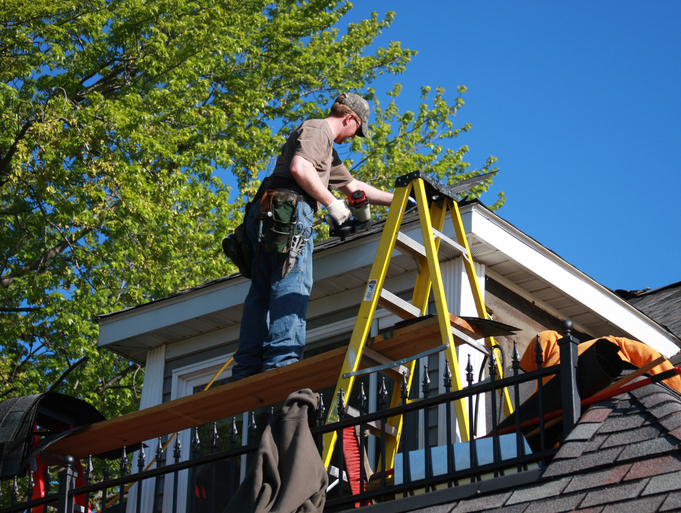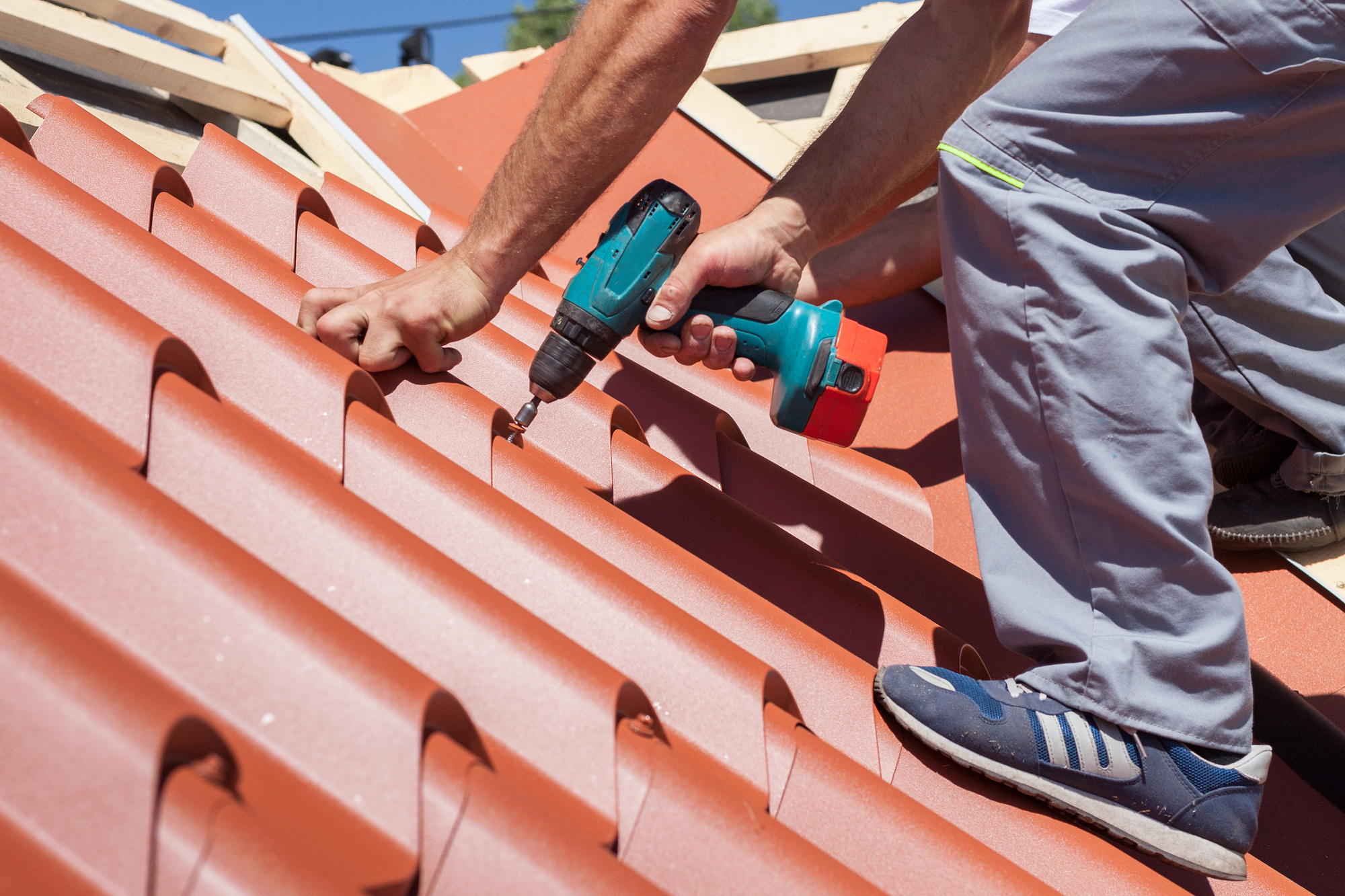Roof Repairs 101 Essential Tips A roof, a shield against the elements, requires a bit of care and attention from time to time. Whether you’re a seasoned DIY enthusiast or just dipping your toes into the world of home maintenance, these Basic Roof Repair Tips for Beginners will equip you with the knowledge you need. Let’s dive into the essentials and demystify the art of roof repairs.
Essential Tools for DIY Roof Repairs

Before delving into the intricate world of roof repairs, it’s crucial to assemble a toolkit that ensures safety and efficiency. Here’s a curated list of tools every DIY enthusiast should have:
- Safety Gear: Prioritize a sturdy pair of non-slip shoes, a hard hat, and a safety harness to guarantee your well-being.
- Roofing Hammer: This specialized hammer boasts a serrated edge for removing old nails and a smooth face for driving new ones.
- Roofing Nails and Screws: Different roofing materials require specific fasteners. Ensure you have an assortment to cater to various needs.
- Roofing Shingles and Tar: Keep spare shingles and roofing tar on hand for quick fixes.
- Sealant Gun: A high-quality sealant gun is indispensable for applying adhesives and sealants.
- Roofing Knife: Opt for a retractable utility knife with a sharp blade for precision cutting.
- Ladder with Stabilizers: A sturdy ladder equipped with stabilizers provides a secure platform for accessing different areas of your roof.
- Chalk Line: This tool aids in achieving straight lines, crucial for accurate installations.
- Roofing Square: A square with measurements specifically designed for roofing tasks ensures precise angles and cuts.
- Roofing Brushes and Brooms: Essential for clearing debris and preparing the surface for repairs.
Remember, investing in high-quality tools pays dividends in terms of safety and the longevity of your repairs.
Navigating the Terrain: Local Roof Repair Services and Experts

Before you embark on your DIY journey, consider the wisdom of consulting Local Roof Repair Services and Experts. These professionals are well-versed in the intricacies of regional climate and the unique challenges it poses to roofs. Their wealth of experience can be an invaluable resource, especially when faced with complex repairs.
Essential Tools for DIY Roof Repairs: Your Arsenal of Efficiency

Every craftsman needs the right tools, and roof repairs are no exception. Here’s a curated list of tools that will prove indispensable in your quest for a leak-proof, sturdy roof:
- Roofing Hammer: This specialized hammer has a slightly curved head for easier nail placement and removal. Its claw is designed for pulling out nails.
- Utility Knife with Hook Blades: Ideal for cutting shingles and roofing materials, the hook blade ensures precise and controlled cuts.
- Roofing Nails and Staples: Opt for galvanized or stainless steel nails and staples, as they are corrosion-resistant and provide long-lasting durability.
- Roofing Adhesive and Sealant: These are your first line of defense against leaks. Choose a high-quality, waterproof adhesive to seal joints and seams.
- Safety Harness and Anchors: Safety should always be a priority. A secure harness and anchors will prevent accidents while working at heights.
- Roofing Shovel or Spade: Perfect for removing old, damaged materials, a roofing shovel has a flat, wide blade that easily slides under shingles.
- Roofing Square: This tool helps ensure accurate measurements and angles, crucial for precise cuts and installations.
- Chalk Line: Use this to create straight, level lines for guiding your work, especially when installing shingles.
Step-by-Step Guide to Roof Damage Repair: Your Roadmap to Success

Now that you’re armed with the right tools, let’s embark on a Step-by-Step Guide to Roof Damage Repair:
1. Safety First: Before ascending to the roof, ensure you’re wearing non-slip footwear and have a secure safety harness in place. Take your time and avoid rushing.
2. Assessment and Planning: Begin by inspecting the roof for visible damage. Look for missing shingles, cracks, or areas where water might be seeping through. Create a plan of action based on your findings.
3. Tarping and Temporary Fixes: If you discover a leak, use a tarp or plastic sheet to cover the affected area temporarily. This will prevent further damage while you work on a more permanent solution.
4. Removing Damaged Materials: Use your roofing shovel or spade to carefully remove damaged shingles, flashing, or other materials. Take care not to damage surrounding areas.
5. Addressing Underlying Issues: Inspect the underlying structure for any signs of rot or damage. Replace or repair any compromised areas to ensure a solid foundation for your repairs.
6. Replacing Shingles: Carefully install new shingles, ensuring they align properly with the existing ones. Use roofing adhesive and nails to secure them in place.
7. Flashing and Sealing: Pay special attention to areas around vents, chimneys, and skylights. Use roofing sealant and flashing to create a watertight barrier.
8. Quality Inspection: Step back and inspect your work. Look for any gaps, loose materials, or signs of incomplete sealing. Address any issues promptly.
9. Clean-Up and Maintenance: Dispose of old materials responsibly. Clean the work area thoroughly to ensure no debris poses a future risk to your roof. Schedule regular maintenance checks to catch any potential issues early
Termination: Roof Repairs 101 Essential Tips
In conclusion, roof repairs, though they may seem daunting, can be tackled with the right knowledge and tools. Remember, consulting Local Roof Repair Services and Experts is always a wise move, especially for more complex repairs. Armed with these Basic Roof Repair Tips for Beginners, you’re ready to embark on your journey towards a sturdy, leak-free roof. Happy repairing!

